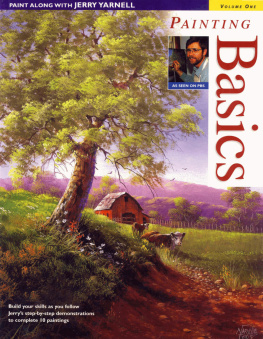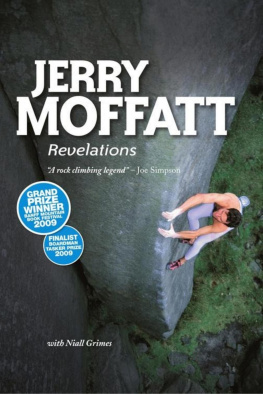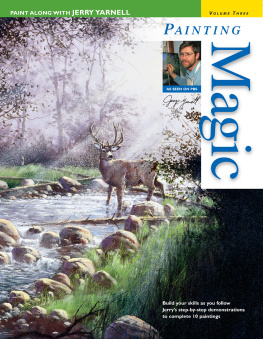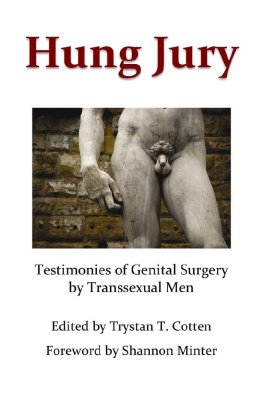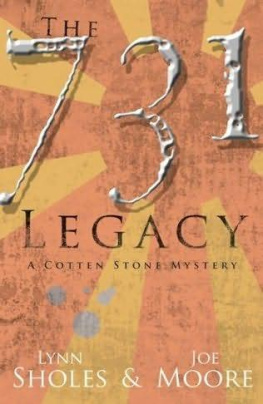Jerry W. Cotten - Light and Air
Here you can read online Jerry W. Cotten - Light and Air full text of the book (entire story) in english for free. Download pdf and epub, get meaning, cover and reviews about this ebook. year: 2017, publisher: UNC Press, genre: Non-fiction. Description of the work, (preface) as well as reviews are available. Best literature library LitArk.com created for fans of good reading and offers a wide selection of genres:
Romance novel
Science fiction
Adventure
Detective
Science
History
Home and family
Prose
Art
Politics
Computer
Non-fiction
Religion
Business
Children
Humor
Choose a favorite category and find really read worthwhile books. Enjoy immersion in the world of imagination, feel the emotions of the characters or learn something new for yourself, make an fascinating discovery.

- Book:Light and Air
- Author:
- Publisher:UNC Press
- Genre:
- Year:2017
- Rating:3 / 5
- Favourites:Add to favourites
- Your mark:
- 60
- 1
- 2
- 3
- 4
- 5
Light and Air: summary, description and annotation
We offer to read an annotation, description, summary or preface (depends on what the author of the book "Light and Air" wrote himself). If you haven't found the necessary information about the book — write in the comments, we will try to find it.
Light and Air — read online for free the complete book (whole text) full work
Below is the text of the book, divided by pages. System saving the place of the last page read, allows you to conveniently read the book "Light and Air" online for free, without having to search again every time where you left off. Put a bookmark, and you can go to the page where you finished reading at any time.
Font size:
Interval:
Bookmark:

The camera is not a free agent as brush or pencil,
but relentlessly records things as they are. So the
artist must bring to her aid strong contrasts of light
and shade, artistic grouping and rhythmic lines.
To use a camera as a means of artistic expression,
a certain quality of spirit must be brought to aid
light and air. Bayard Wootten, 1926
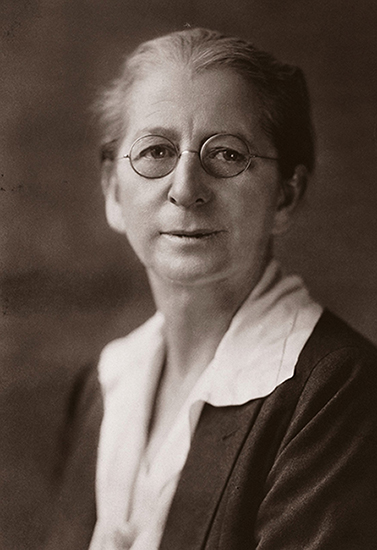
Bayard Wootten (18751959)
THE PHOTOGRAPHY OF BAYARD WOOTTEN
JERRY W. COTTEN
With a new foreword by Stephen J. Fletcher
The University of North Carolina Press
Chapel Hill
1998 The University of North Carolina Press
Foreword 2017 The University of North Carolina Press
All rights reserved
Manufactured in China
This book was set in Monotype Garamond by Eric M. Brooks
Book design by April Leidig-Higgins
This volume was published with the assistance of the Blythe Family Fund of the University of North Carolina Press.
The paper in this book meets the guidelines for permanence and durability of the Committee on Production Guidelines for Book Longevity of the Council on Library Resources.
Library of Congress Cataloging-in-Publication Data
Cotten, Jerry W.
Light and air : the photography of Bayard Wootten / by Jerry W. Cotten.
p. cm. Includes bibliographical references and index.
ISBN 978-0-8078-2445-0 (cloth : alk. paper)
ISBN 978-1-4696-3248-3 (pbk. : alk. paper)
1. Photography, Artistic. 2. Wootten, Bayard Morgan, 18751959. I. Wootten, Bayard Morgan, 18751959. II. Title.
TR653.C68 1998 98-3421
779.092dc21 CIP
Frontispiece: Photograph courtesy of the Celia Eudy Collection.
For Bayard Wootten
and all those who went before her lens.
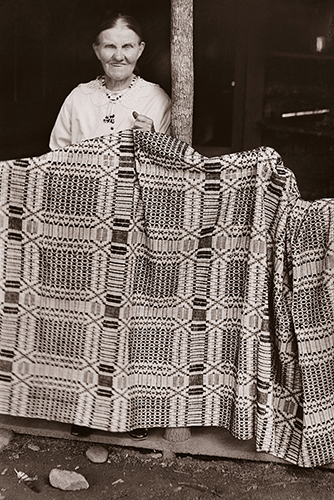
Cumi Woody
THE ANCIENT OF DAYS
Jonathan Williams
would that I
had known Aunt Cumi
Woody
C-u-m-i, pronounced
Q-my
she lived in the Deyton Bend Section of Mitchell
County, North Carolina many years ago
there is one of Bayard Woottens photographs of her
standing there with her store-bought
teeth, holding a coverlet
she sheared her sheep, spun
and dyed her yarn in vegetable dyes,
and wove the coverlet
in indigo, the brown from walnut roots,
red from madder, green from hickory ooze, first,
then into the indigo (the blue pot)
Cumi, from the Bible
(St. Mark 5:41)
Talitha Cumi:
Damsel, I say unto thee, arise!
she is gone, she
enjoyed her days
You are fortunate. Why? Because along with the good news of the second printing of Light and Air came the even better news that the printing plates used for the books first printing no longer exist. You may be thinking, So this is even better news? Yes, it is. This misfortune presented the wonderful opportunity to bring twenty-first-century digital imaging technology to the representation of Bayard Woottens traditionally made negatives and photographs. Now we could capture even more of the richness found in her large 5 7- and 8 10-inch negatives. Todays digital cameras with high resolution image sensors, coupled with raster graphics software, have replaced the darkroom methods used nearly two decades ago. What a wonderful difference eighteen years of photographic advancements have made!
How may you enjoy these developments? Compared to traditional techniques, digital imaging technology reproduces images with improvements that are both subtle and dramatic. Spend time looking at enhanced details. Enjoy expanded tonal ranges between shadows and highlights. Appreciate skies with clouds where before they could not be reproduced. The joy is in the seeing, and all these nuances of light and air result from painstaking work by Jay Mangum, digitization support technician in the University of North Carolina Libraries Digital Production Center. You may also explore more Wootten photographs than appear in this book. Significant portions of UNCs Bayard Morgan Wootten Photographic Collection are digitized and viewable online through UNC Libraries collection finding aid (http://finding-aids.lib.unc.edu/P0011/), including all of her images in this book.
Stephen J. Fletcher
I saw my first Bayard Wootten photograph in 1972, not long after beginning work in the North Carolina Collection, a department of the library at the University of North Carolina at Chapel Hill. The collection is steeped in historical resources, and my explorations eventually led to an out-of-the-way cabinet of old pictures. Among the files were two large, brown envelopes labeled Tobacco and Cotton. Inside were photographs of farm families, both black and white, planting and harvesting the crops. Acquired by the North Carolina Collection years earlier, the prints had attracted little notice from researchers.
These prints, however, aroused more than my passing interest. The summers I had worked on tobacco farms while growing up in nearby Chatham County were fresh in my memory. The photographs recalled a rural life that I knew, a world that had quietly slipped away with little notice.
I was not a connoisseur of fine photography, but even my laymans eye could discern a bit of artistic class in many of the compositions. An observer could absorb these photographs with little effort, the eye surveying a print and coming to rest upon subjects undisturbed by extraneous elements or stiff and awkward poses. The prints had a symmetry, a character, and a simplicity that were pleasing. They looked natural yet finely tuned, as if part of a well-crafted story. What was the origin of these photographs, and who was the photographer named Bayard Wootten who had signed each one in a distinctive block-like handwriting?
My first surprise was learning that Bayard Wootten was a woman. I never doubted that women could make great photographs, but these images dated from the Great Depression of the 1930s, a time when most women worked at home. Wootten was also from North Carolina and largely self-taught as a photographer. One thing was certainthe more of her work I saw, the more I wanted to see.
Biographical information on Wootten in the North Carolina Collection consisted primarily of newspaper and journal articles from the 1930s through the 1950s. A small collection of prints and six books that she illustrated between 1934 and 1941 comprised the record of her camera work. Scholarly accounts of Woottens early life did not exist, and no publication examined her contribution within the broad context of American photography in the twentieth century. In the ensuing years, however, I learned much more about Bayard Wootten and her legacy of old photographs still tucked away in closets, storerooms, and attics.
She was born in 1875 in New Bern, North Carolina. Her mother was artistically talented, and her father tried the photographic profession for several years before giving it up. He died when she was five.
Bayards artistic skills developed under the tutelage of her mother. She attended a womens school at Greensboro in the early 1890s and then accepted a teaching position at a school for the deaf in Arkansas. Two years later she took a similar position in Georgia. She married there in 1897 and had two sons. The marriage failed, however, and in 1901 Wootten returned to North Carolina. At first she pursued drawing and painting as a cottage industry, but around 1904 the possibility of photographic orders replacing labor-intensive artwork steered her to the camera. Economic self-reliance was a necessity for Wootten, and it became a natural companion to her innate spirit of independence.
Next pageFont size:
Interval:
Bookmark:
Similar books «Light and Air»
Look at similar books to Light and Air. We have selected literature similar in name and meaning in the hope of providing readers with more options to find new, interesting, not yet read works.
Discussion, reviews of the book Light and Air and just readers' own opinions. Leave your comments, write what you think about the work, its meaning or the main characters. Specify what exactly you liked and what you didn't like, and why you think so.



